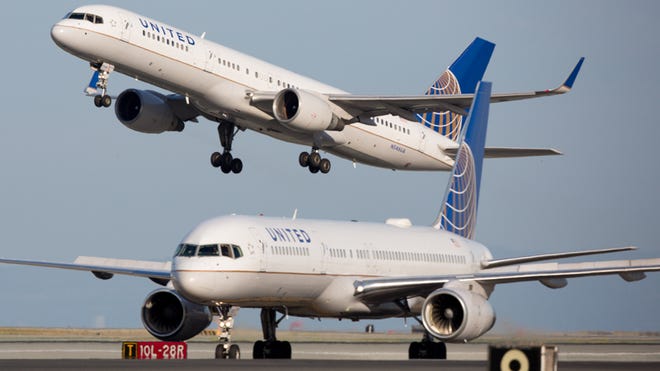Two passengers were injured Thursday when a United Airlines flight abruptly altered its course as it descended into San Francisco.
“United flight 2428 was descending to SFO on Sept. 19 with the seatbelt sign on when it slowed its descent to account for another aircraft at a lower altitude. Two customers, including one who was out of their seat at the time, reported possible injuries and were transported to a hospital. We’re grateful to our crew for their efforts to ensure the safety of our employees and customers,” the airline said in a statement.
The flight was en route from Newark.
Incidents like these often involve the airplane’s traffic collision avoidance system (TCAS), which alerts pilots of aircraft on conflicting courses of a collision risk and prompts them to alter course to avoid it. TCAS instructions typically tell one pilot to climb and another to descend in order to provide more vertical separation between their aircraft.
United was not immediately able to confirm whether or not TCAS was invovled in the Sept. 19 incident.
It’s the latest reminder for why observing the seatbelt sign is so important.
Ding!:Even if the seatbelt sign is off, you should stay buckled while flying. Here’s why.
When it’s on, it’s because pilots expect turbulence or are prepared to make sudden maneuvers.
Even when it’s off, turbulence can pop up unexpectedly, and it’s a good idea to stay buckled in whenever seated on a plane.
Zach Wichter is a travel reporter for USA TODAY based in New York. You can reach him at zwichter@usatoday.com.

